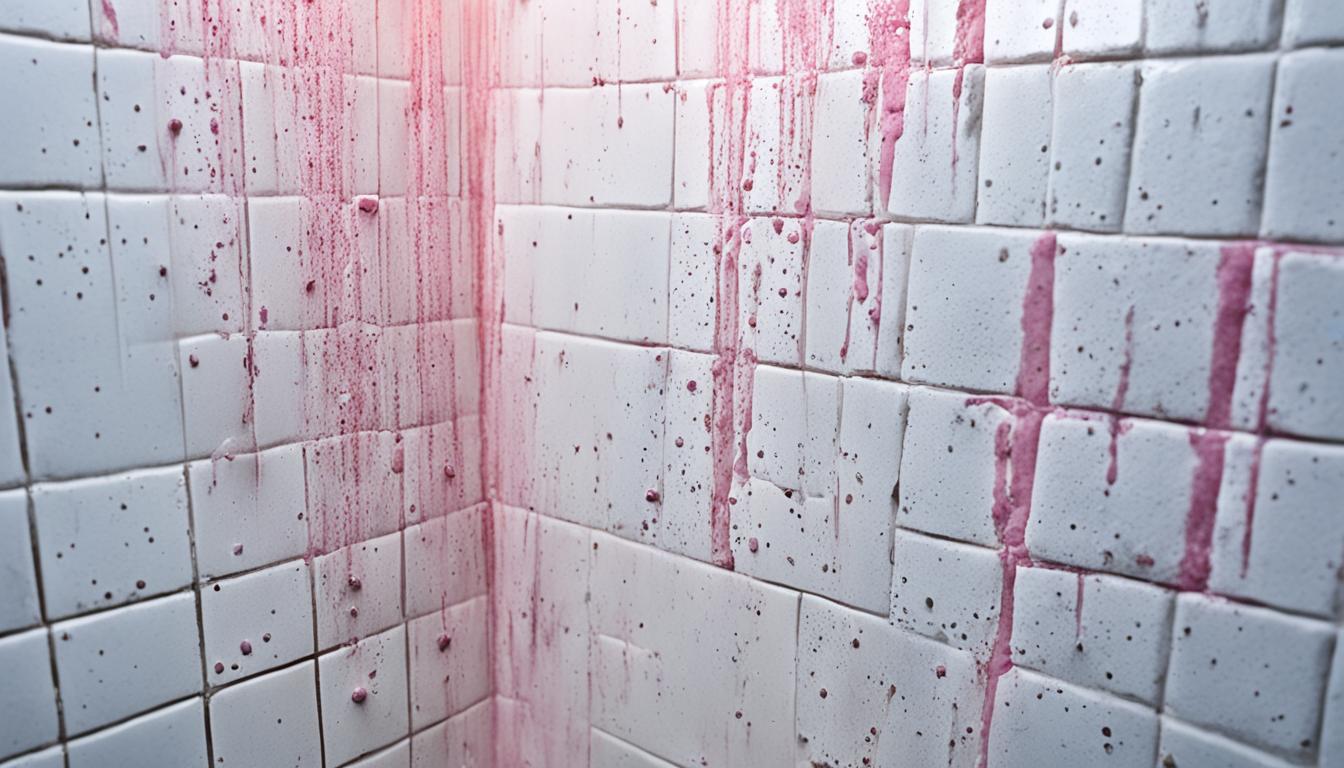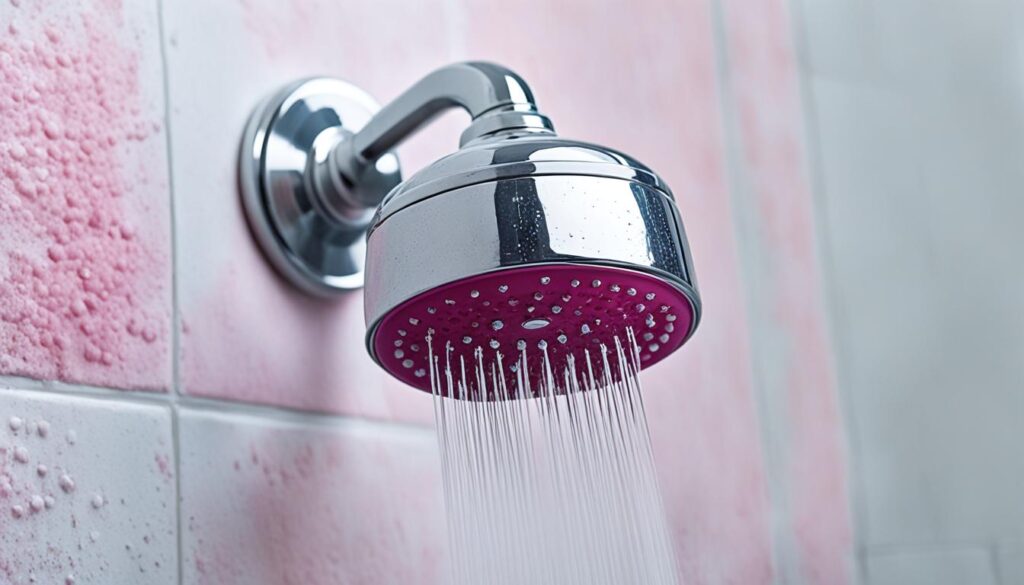
Combat Pink Mold in Shower – Prevention Tips
In this section, we will provide you with expert prevention tips to combat pink mold in your shower. Pink mold is a common problem in bathrooms and can cause health issues if left unaddressed. By following these prevention tips, you can maintain a clean and safe bathroom space.
Key Takeaways:
- Pink mold, scientifically known as Aureobasidium, is a type of fungi that thrives in damp and humid environments like showers.
- Preventing pink mold growth requires regular cleaning and maintenance of your shower.
- Keep your shower dry and improve ventilation to reduce moisture levels.
- Regularly clean and disinfect your shower to prevent pink mold from developing.
- Repair leaks and cracks in your shower to eliminate potential moisture sources.
Understanding Pink Mold in Shower
Before diving into prevention tips, it’s important to understand what pink mold is and why it develops in showers. Pink mold, scientifically known as Aureobasidium and commonly mistaken for a type of bacteria, is actually a type of fungi. It thrives in damp and humid environments like showers, particularly on grout, caulking, and other moisture-prone surfaces.
Pink mold in shower is a common problem that can lead to unsightly stains and unpleasant odors. It not only affects the aesthetic appeal of your bathroom but can also pose health risks, especially for individuals with respiratory conditions or weakened immune systems.
Understanding the factors that contribute to pink mold growth will help you implement effective prevention strategies and ensure a clean and healthy bathroom environment.

Factors Contributing to Pink Mold Growth in Showers
To effectively combat pink mold, it’s crucial to be aware of the factors that promote its growth in showers:
- Moisture: Pink mold thrives in moist environments, making showers an ideal breeding ground. Poor ventilation, constant humidity, and water splashes create a damp environment, providing the perfect conditions for pink mold to grow.
- Organic Matter: Pink mold feeds on organic materials commonly found in showers, such as soap scum, body oils, and dead skin cells. These provide nourishment for the mold and encourage its growth.
- Surface Porosity: Mold easily attaches to porous surfaces like grout and caulking in showers. The rough texture and tiny crevices offer a suitable habitat for mold to establish and spread.
By understanding these contributing factors, you can take proactive measures to prevent pink mold growth in your shower. In the next section, we will explore prevention tips to help you maintain a clean and mold-free bathroom.
Prevention Tips for Pink Mold in Shower
Now that you know more about pink mold, let’s explore some prevention tips to keep it at bay in your shower. Regular cleaning and maintenance are key to preventing pink mold growth. Here are some tips to help you:
- Keep the shower dry: After each use, wipe down the walls, tiles, and surfaces to remove excess moisture. This will inhibit the growth of pink mold.
- Improve ventilation: Ensure that your bathroom has proper ventilation to reduce humidity levels. Open windows or use exhaust fans to allow fresh air circulation and moisture removal.
- Regularly clean and disinfect: Use a mild detergent or cleaning solution to clean your shower regularly. Pay attention to grout lines, corners, and other areas where moisture can accumulate.
- Repair leaks and cracks: Check your shower for any leaks or cracks in the tiles, grout, or caulking. Repairing these issues promptly will prevent moisture from seeping into hidden areas and promoting pink mold growth.
- Replace worn-out seals and caulking: Over time, seals and caulking can deteriorate, creating gaps and allowing water to penetrate. Replace any worn-out seals or caulking to maintain a watertight seal.
Remember, prevention is the key to avoiding pink mold in your shower. By following these tips, you can create an environment that is inhospitable to pink mold growth, ensuring a clean and healthy shower space.

Prevention Tips for Pink Mold in Shower
| Tips to Prevent Pink Mold | Description |
|---|---|
| Keep the shower dry | Wipe down surfaces after use to remove excess moisture. |
| Improve ventilation | Open windows or use exhaust fans to reduce humidity levels. |
| Regularly clean and disinfect | Use a mild detergent or cleaning solution to remove mold spores. |
| Repair leaks and cracks | Fix any leaks or cracks in the shower to prevent water accumulation. |
| Replace worn-out seals and caulking | Ensure a watertight seal by replacing old seals and caulking. |
Conclusion
By implementing these preventive measures, you can effectively combat pink mold in your shower, creating a clean and safe bathroom environment. Maintaining a dry shower is crucial in preventing mold growth, so make sure to wipe down surfaces after every use and fix any leaks or cracks promptly.
Proper ventilation is also essential in keeping humidity levels low, as it inhibits mold growth. Regularly clean and disinfect your shower using mold-killing agents, paying special attention to grout and caulk areas. If you notice worn-out seals or caulking, replace them to prevent moisture buildup.
If you require professional assistance, consider contacting Fix Mold Miami at 305-465-6653 for a thorough mold assessment. Taking proactive steps to prevent pink mold in your shower will ensure a healthy and hygienic bathroom space for you and your family.




